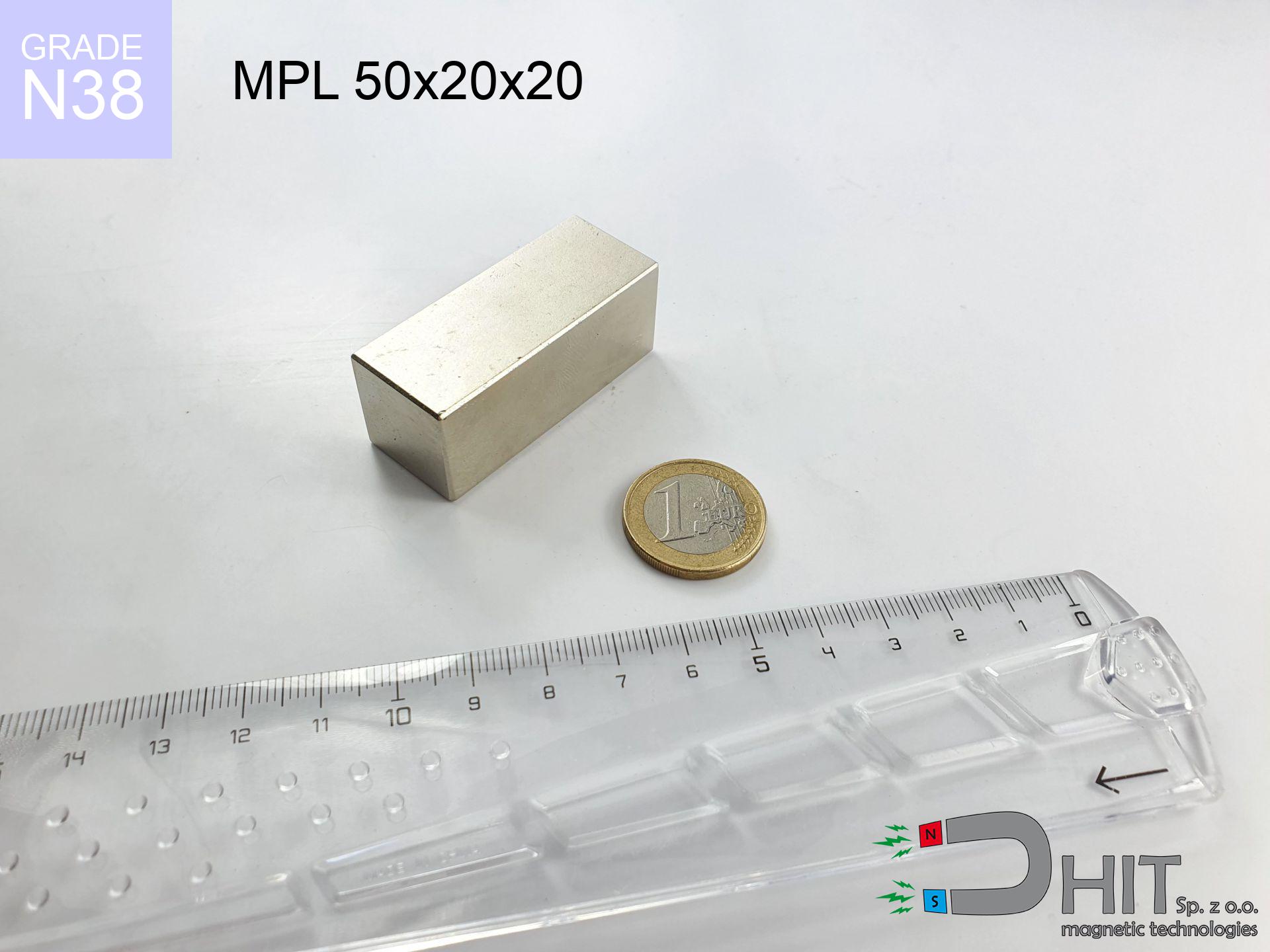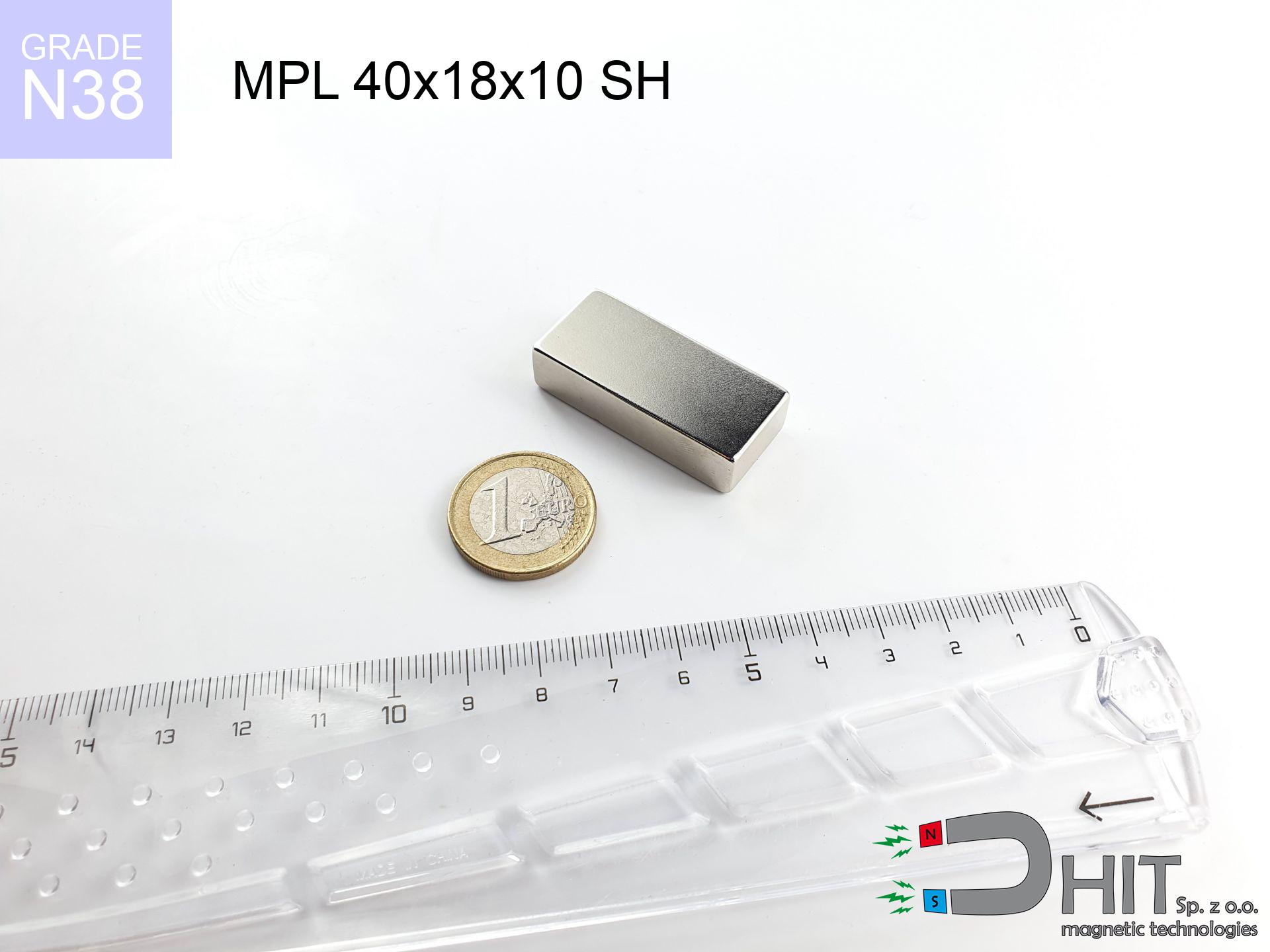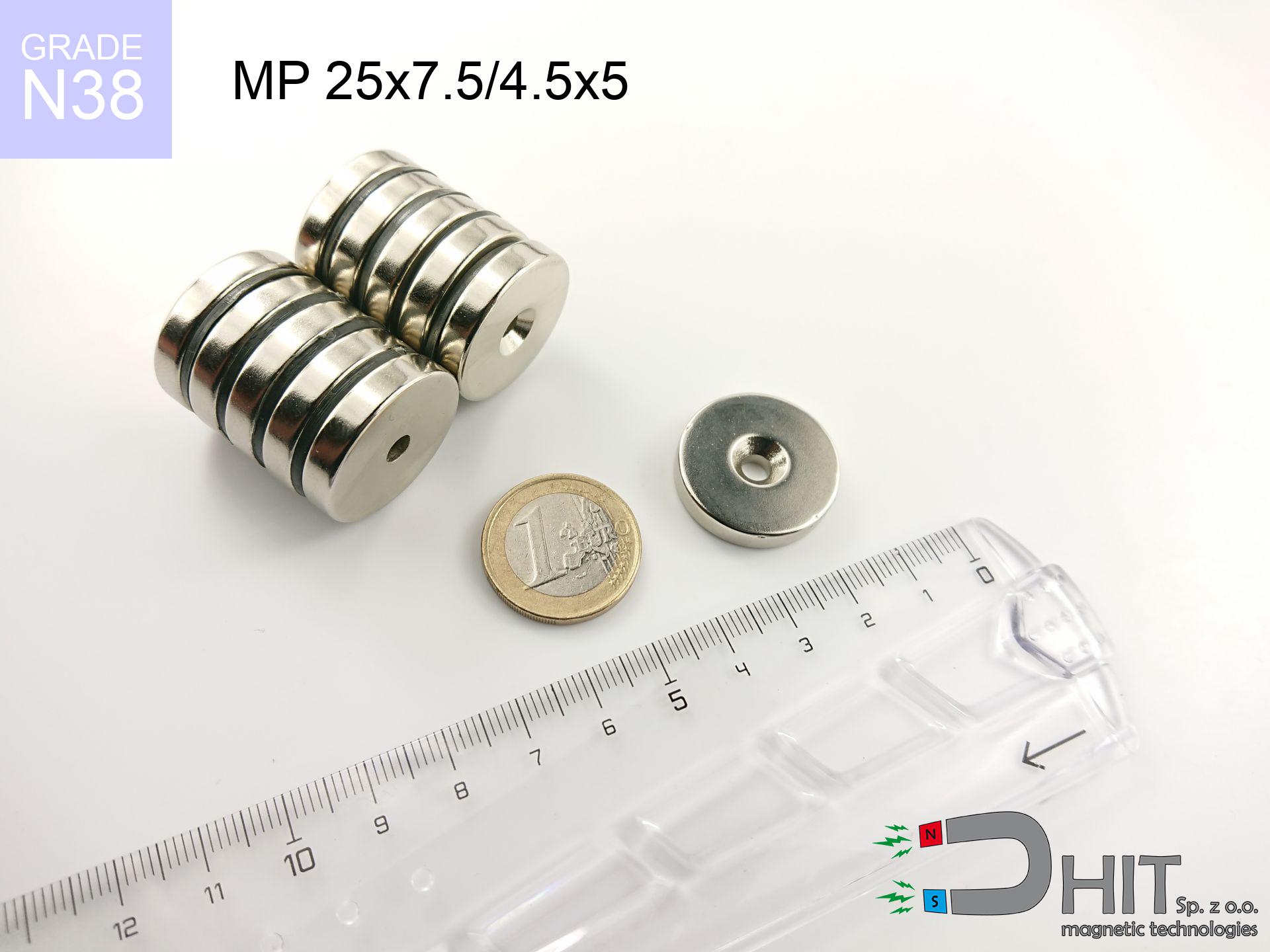HH 25x7.7 [M5] / N38
through hole magnetic holder
catalog number 370482
GTIN: 5906301814924
magnetizing direction
↑ axial
capacity ~
17.00 kg / 166.71 N
max. temperature
≤ 80
°C
catalog number 370482
GTIN: 5906301814924
magnetizing direction
↑ axial
capacity ~
17.00 kg / 166.71 N
max. temperature
≤ 80 °C
11.44 ZŁ gross price (including VAT) / pcs +
9.30 ZŁ net price + 23% VAT / pcs
bulk discounts:
need more quantity?Don't know what to choose?
Give us a call tel: +48 888 99 98 98 or contact us via contact form on our website. You can check the mass and the appearance of neodymium magnets in our magnetic mass calculator power calculator
Orders placed by 2:00 PM will be shipped on the same business day.
Specification: through hole magnetic holder 25x7.7 [M5] / N38 ↑ axial
Magnetic properties of the material N38
Physical properties of sintered neodymium magnets Nd2Fe14B
Choose recommended products
Advantages as well as disadvantages of neodymium magnets NdFeB.
In addition to immense strength, neodymium magnets have the following advantages:
- They do not lose their power (of the magnet). After about 10 years, their power decreases by only ~1% (theoretically),
- They are extremely resistant to demagnetization by external magnetic field,
- In other words, thanks to the shiny nickel, gold, or silver finish, the element gains an aesthetic appearance,
- They have exceptionally high magnetic induction on the surface of the magnet,
- Thanks to their high temperature resistance, they can operate (depending on the shape) even at temperatures up to 230°C and above...
- Due to the option of accurate forming or adaptation to individual needs – neodymium magnets can be produced in various forms and dimensions, which expands the range of their possible uses.
- Wide application in the industry of new technologies – find application in computer drives, electric motors, medical apparatus or other advanced devices.
Disadvantages of neodymium magnets:
- They can break when subjected to a strong impact. If the magnets are exposed to impacts, we recommend using magnets in a metal holder. The steel housing in the form of a holder protects the magnet from impacts and at the same time increases its overall strength,
- High temperatures can reduce the power of neodymium magnets. Typically, after heating above 80°C, most of them experience a permanent loss in strength (although it is dependent on the form and size). To prevent this, we offer special magnets marked with the symbol [AH], which are highly resistant to high temperatures. They can operate even at temperatures up to 230°C, making them an ideal solution for applications requiring high-temperature operation,
- Due to their susceptibility to corrosion in a humid environment, we recommend using waterproof magnets made of rubber, plastic, or other moisture-resistant materials when using them outdoors,
- The use of a cover or a magnetic holder is recommended due to the limited possibilities of manufacturing threads or complex shapes in the magnet
- Potential hazard to health from tiny fragments of magnets are risky, if swallowed, which is crucial in the aspect of protecting young children. Furthermore, tiny parts of these products have the potential to complicate diagnosis when they are in the body.
Safety Guidelines with Neodymium Magnets
Neodymium magnets are among the strongest magnets on Earth. The astonishing force they generate between each other can shock you.
To handle magnets properly, it is best to familiarize yourself with our information beforehand. This will help you avoid significant harm to your body and the magnets themselves.
Neodymium magnets can become demagnetized at high temperatures.
Although magnets have shown to retain their effectiveness up to 80°C or 175°F, this temperature may vary depending on the type of material, shape, and intended use of the magnet.
Neodymium magnets should not be near people with pacemakers.
In the case of neodymium magnets, there is a strong magnetic field. As a result, it interferes with the operation of a heart pacemaker. However, if the magnetic field does not affect the device, it can damage its components or deactivate the device when it is in a magnetic field.
The magnet is coated with nickel. Therefore, exercise caution if you have an allergy.
Studies show a small percentage of people have allergies to certain metals, including nickel. An allergic reaction often manifests as skin redness and rash. If you have a nickel allergy, try wearing gloves or avoid direct contact with nickel-plated neodymium magnets.
Do not give neodymium magnets to youngest children.
Neodymium magnets are not toys. You cannot allow them to become toys for children. In such a situation, surgery is necessary to remove them. In the worst case scenario, it can result in death.
Keep neodymium magnets away from TV, wallet, and computer HDD.
The strong magnetic field generated by neodymium magnets can damage magnetic media such as floppy disks, video tapes, HDDs, credit cards, magnetic ID cards, cassette tapes, etc. devices. They can also damage videos, televisions, CRT computer monitors. Do not forget to keep neodymium magnets away from these electronic devices.
Avoid bringing neodymium magnets close to a phone or GPS.
Intense magnetic fields generated by neodymium magnets interfere with compasses and magnetometers used in navigation, as well as internal compasses of smartphones and GPS devices.
Neodymium Magnets can attract to each other due to their immense internal force, causing the skin and other body parts to get pinched and resulting in significant swellings.
Magnets will attract each other within a distance of several to about 10 cm from each other. Don't put your fingers in the path of magnet attraction, because a major injury may occur. Depending on how huge the neodymium magnets are, they can lead to a cut or a fracture.
Neodymium magnets are extremely fragile, leading to their cracking.
Neodymium magnets are delicate and will break if allowed to collide with each other, even from a distance of a few centimeters. They are coated with a shiny nickel plating similar to steel, but they are not as hard. At the moment of collision between the magnets, small sharp metal pieces can be propelled in various directions at high speed. Eye protection is recommended.
Dust and powder from neodymium magnets are flammable.
Do not attempt to drill into neodymium magnets. Mechanical processing is also not recommended. If the magnet is crushed into fine powder or dust, it becomes highly flammable.
So you are aware of why neodymium magnets are so dangerous, read the article titled How very dangerous are very powerful neodymium magnets?.

![HH 25x7.7 [M5] / N38 HH 25x7.7 [M5] / N38](https://cdn3.dhit.pl/graphics/products/hh-25x7.7-m5-pov.jpg)





